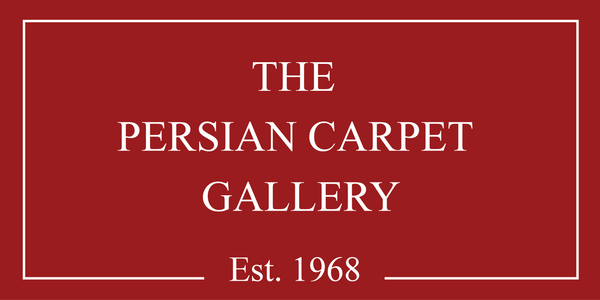Silk Kilim from the Thyssen-Bornemisza Collection, Lugano
Silk Kilim from the Thyssen-Bornemisza Collection, Lugano – A Masterpiece of Safavid Artistry
A Rare Persian Kilim from the 17th Century
Among the most exquisite examples of Persian textile artistry, the Silk Kilim from the Thyssen-Bornemisza Collection in Lugano, Switzerland, stands out as an exceptional piece from the early Safavid period (17th century). This tapestry-woven silk rug, also known as the Figdor Kilim, derives its name from the Viennese collector who once owned it. Originating from Kashan, Central Persia, this kilim is a stunning representation of the advanced weaving techniques and intricate designs characteristic of Safavid craftsmanship.
Historical and Artistic Significance
This luxurious Persian kilim is crafted entirely from silk, with the weft threads interwoven with delicate silver thread, adding a luminous quality to its design. Measuring 197 x 129 cm (78 x 51 inches), its elegant composition and rare materials suggest that it was likely commissioned for a high-ranking noble or a royal court.
What sets this Kashan kilim apart is its unique medallion pattern. The elongated medallions, filled with intricate animal motifs, are a distinguishing feature. Some medallions contain solitary animals, while others depict animals engaging in dramatic interactions or stylized animal masks, embodying the artistic richness of Safavid-era Persian textiles. Surrounding these motifs is an ornate arabesque border, where floral and vine-like patterns meander gracefully, a signature of Persian decorative arts.
The Legacy of Safavid Kilims
Kashan has long been renowned for its production of high-quality silk carpets and kilims, particularly during the Safavid dynasty (1501–1736), a golden era for Persian rug weaving. Unlike traditional pile carpets, kilims are flat-woven, which makes their detailed patterns even more remarkable. The Silk Kilim from the Thyssen-Bornemisza Collection is believed to be one of the earliest Safavid kilims, providing valuable insight into the evolution of Persian textile design.
This masterpiece reflects the cultural and artistic advancements of its time, blending elements of Persian mythology, nature, and fine craftsmanship. Today, it remains a priceless treasure, highlighting the enduring beauty and sophistication of Persian kilims.
Why This Persian Kilim is a Rare Collectible
✔ Exceptional Materials – Pure silk warp and silver-threaded silk weft create a luxurious finish.
✔ Historical Importance – Among the earliest kilims of the Safavid period, offering insight into Persian weaving traditions.
✔ Unique Design – Features rare elongated medallions with intricate animal figures and arabesque borders.
✔ Museum-Worthy Craftsmanship – Now housed in the Thyssen-Bornemisza Collection, a testament to its cultural value.
Conclusion
The Silk Kilim from Kashan, housed in the Thyssen-Bornemisza Collection, is a testament to the artistic and technical mastery of Persian weavers during the 17th century. Its rich patterns, exquisite materials, and historical importance make it one of the most coveted Safavid kilims in the world. Whether you're a collector, an art enthusiast, or a lover of Persian textiles, this kilim represents the pinnacle of Safavid-era elegance and craftsmanship.

